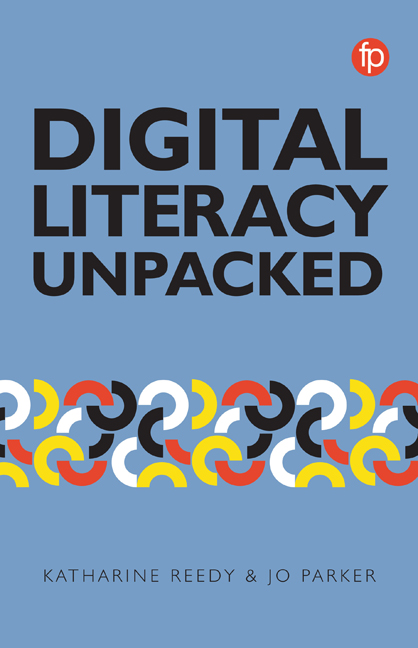Book contents
- Frontmatter
- Contents
- List of figures and case studies
- Foreword
- Notes on Contributors
- Introduction
- Part I Approaching Digital Literacy
- Part II Learning in a Digital World
- 4 Digital Literacy in UK and European Schools: Enhancing School Children's Motivation to Read for Pleasure
- 5 Digital Games: Providing Unique Digital Literacy Challenges in Childhood
- 6 Students in the SADL: Lessons From LSE's Digital Literacy Programme
- 7 Copyright and Digital Literacy: Rules, Risk and Creativity
- Part III Developing Staff Digital Literacies
- Part IV Digital Citizens and Workers
- Conclusion
- Index
4 - Digital Literacy in UK and European Schools: Enhancing School Children's Motivation to Read for Pleasure
from Part II - Learning in a Digital World
Published online by Cambridge University Press: 24 September 2019
- Frontmatter
- Contents
- List of figures and case studies
- Foreword
- Notes on Contributors
- Introduction
- Part I Approaching Digital Literacy
- Part II Learning in a Digital World
- 4 Digital Literacy in UK and European Schools: Enhancing School Children's Motivation to Read for Pleasure
- 5 Digital Games: Providing Unique Digital Literacy Challenges in Childhood
- 6 Students in the SADL: Lessons From LSE's Digital Literacy Programme
- 7 Copyright and Digital Literacy: Rules, Risk and Creativity
- Part III Developing Staff Digital Literacies
- Part IV Digital Citizens and Workers
- Conclusion
- Index
Summary
Introduction
This chapter explores digital literacy in the context of a project which intended to motivate school students to read for pleasure using information and communications technologies (ICT) and creating digital artefacts (eartefacts). We define e-artefacts as digital work created in different formats such as text, video, audio, image or animation, or a combination of these. This project, called AMORES (An approach to MOtivating learners to Read in European Schools; www.amores-project.eu), was funded by the EU Comenius multilateral strand of the Lifelong Learning Programme. AMORES ran from 1 December 2013 to 30 November 2015. It aimed to improve students’ engagement in reading national and European literature through a methodology based on ICT, interactivity and collaboration. Students from five countries exchanged their e-artefacts on national literature online and at a final event. Preliminary work with teachers enabled them to meet their partner school colleagues to develop an online community to support the implementation of a new digital literacy teaching methodology. The common working language was English and the teaching methodology was subsequently translated into their mother tongues for implementation. The project involved 400 students aged 9– 14 from Croatia, Denmark, Poland, Sweden and the UK.
In this chapter we explore the thinking which underpinned the design of the new teaching methodology. An example learning scenario is presented to show how the teaching methodology can be realised. Findings from the pilot implementation are presented. A range of recommendations are discussed including pedagogy, tools and technologies, and social media. The new teaching methodology's potential limitations are also outlined.
Context
Before discussing the project in more detail, it would be useful to begin with a statement of our understanding of what is meant by digital literacy in this context. Digital literacy for our research is defined as ‘a combination of all those capabilities which equip an individual for living, learning and working in a digital society’ (Jisc, 2011, 2). This includes the critical evaluation of digital content and (in an educational context) its application to learning, for teachers in their pedagogic practice and for students as part of their learning. In addition, we believe that there is a social dimension to digital literacy in that digital literacy includes the ability to use digital media for social participation in any context, whether for leisure, education, work or citizenship.
- Type
- Chapter
- Information
- Digital Literacy Unpacked , pp. 47 - 62Publisher: FacetPrint publication year: 2018
- 1
- Cited by



